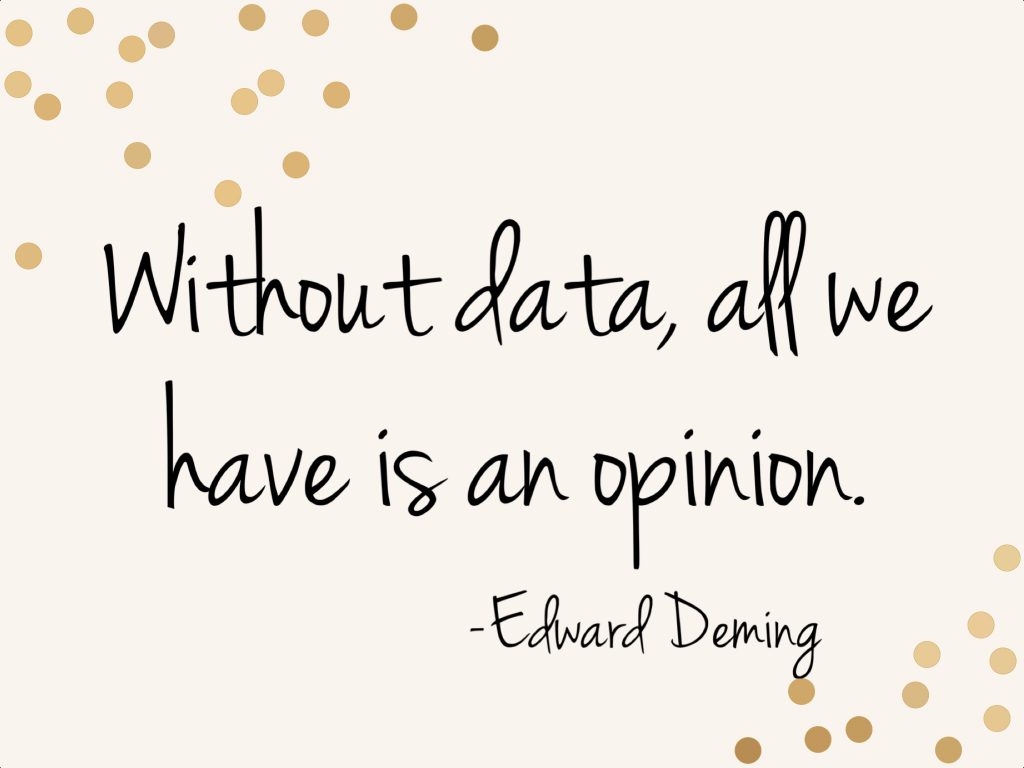
When I first started education, data was not a topic of discussion for me or my content team. Did data exist then? Absolutely! I just didn’t know the value in it or how to use it to my advantage. I taught what I felt the students needed to know, gave tests because that is what you did for the gradebook, and grouped students solely based on behavior or who I thought should work together. I associated pass/fail as the means for knowing if a student understood content and did not take growth into account at all. Was I a bad teacher back then? Definitely not! My students were my core focus, and I did the best I knew how by them. However, I was not necessarily doing them right in not taking their data and growth into account. I have learned a significant amount about data and its many uses since then.
The year before I became an Instructional Coach, we completed a Formative Instructional Practices Professional Development. During this time, data and its uses became much more of a focus for us as a school and, more specifically, a content team. We began to complete data analysis and turn in our breakdowns. I wasn’t truly sold on the data component and still didn’t understand exactly how to make use of it. It wasn’t until the idea of growth became what schools were looking for in standardized testing. The number of students “exceeding” was no longer the baseline for how well you did as a teacher; it was the growth individual students showed that became the focus.
This required a reality check and change in mindset that I think many educators weren’t ready for; however, it has been a good thing. Edward Deming’s quote, “Without data, all we have is an opinion” is one of so much truth. I can guess what my students know all day long, but if their assessment data doesn’t match what I “think,” then my “opinion” is wrong. Period. This is not an easy bullet to swallow as educators, but numbers talk. Therefore, it is important to keep data at the forefront of your planning.
Using data to guide your instruction and make decisions is not necessarily an easy thing to conquer, and depending on how your curriculum and assessments are planned, it can become even more tedious. However, do not let data be another educational hoop you feel you have to jump through. Find what works for you and make it yours.
I believe all hands-on deck is the best strategy for using data. You want your school, students, content team, and parents to all be involved in this process. You want your students to take ownership of their own data. They can track it, set goals with it, and feel accomplished with their own growth. Keep parents involved in this process. You want your team to be using data in similar ways because it makes it easy to compare what is working and what isn’t as a team. Do not let the data become a competition between you and your peers by looking for strengths and weaknesses in everyone’s data. One teacher’s classes may have mastered one standard while your students struggled. Do not be insulted by this; instead, find out what that teacher is doing in his/her class that you are not. In the same way, be ready to offer what you are doing for your students to master standards that other classes are struggling with. Data opens the door for communication and for sharing ideas and resources.
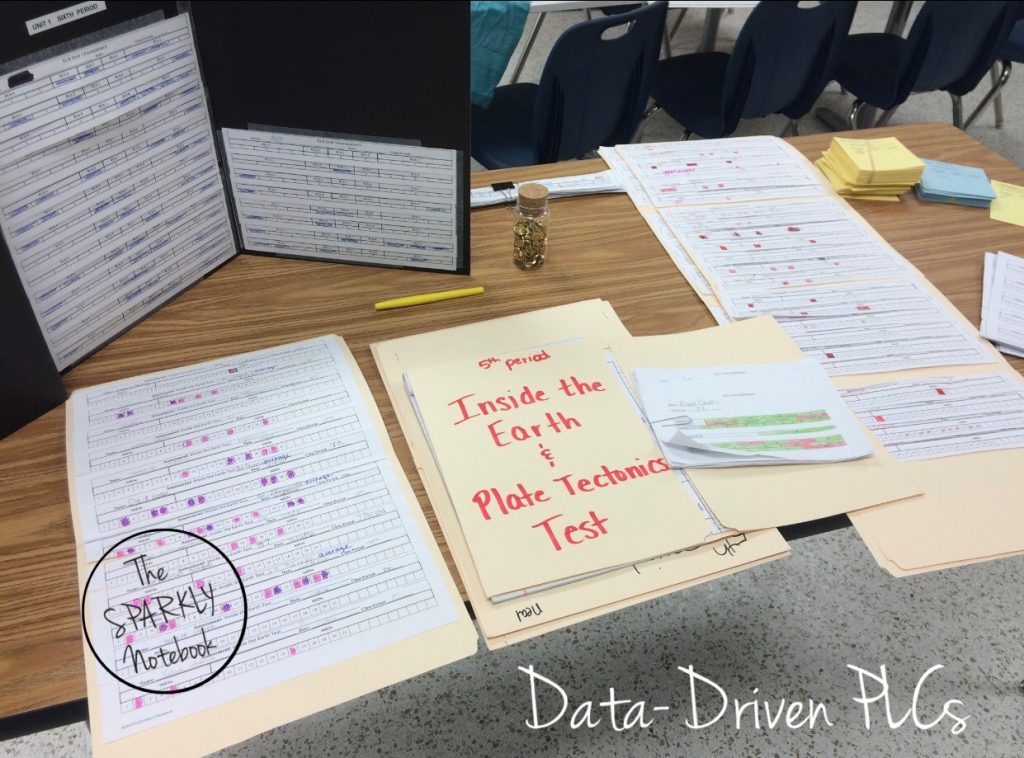
Check out my editable data analysis packet at my TPT store – Click the image to be taken right to it.
There are so many different resources for data analysis available or you can make your own to use. I have put together several different options that you can find at my store; however, find something that works for you and your classroom setting.
Uses for Data (Other than the Sheet You MUST Turn In):
- Data Analysis at Professional Learning Communities: What is working and what is not?
- Grouping: Plan your groups on more than just an opinion
- Differentiated/tiered lessons: Below level, on level, and above grade level
- Conferencing with students: Track where students are, set goals for where they want to be, set plans for how to get there, and monitor the growth
- Look at data for self-reflection and for knowing what content you have mastered versus what you may need to revisit
- Remediation purposes: Which students need remediation on specific content? Use this to differentiate your remediation
“Data by itself is useless. Data is only useful if you apply it.”
-Todd Park
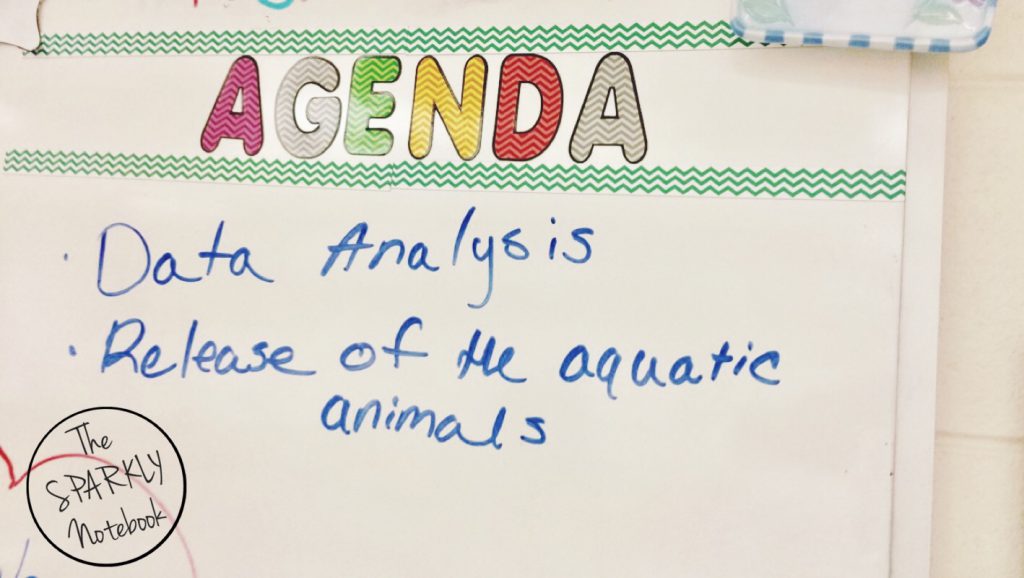
Picture taken from a random pop-in to Cary’s wonderful science classroom! Check her out at http://www.cell-abratingscience.com/
Data is such a great means of gratification when used properly. There’s no better way to see the value in your hours of planning and hard work than to see your students grow. My favorite part of data analysis is when the students are excited about their own growth. Believe it or not, your students will take pride in getting to write in that new and improved score. They value the ownership data allows them to take. It is worth it.
Happy Data-Digging!!!
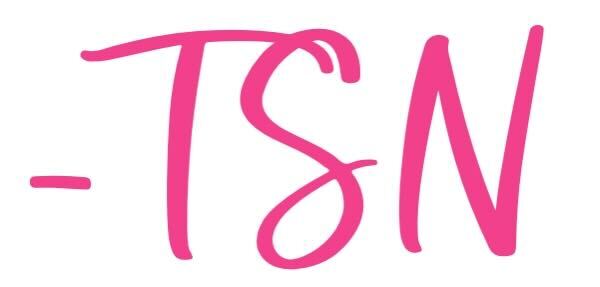
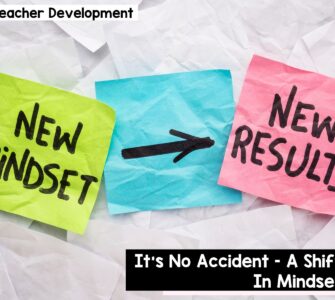 It’s No Accident – A Shift In Mindset
It’s No Accident – A Shift In Mindset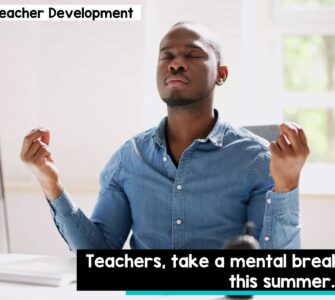 Teachers, take a mental break this summer…
Teachers, take a mental break this summer…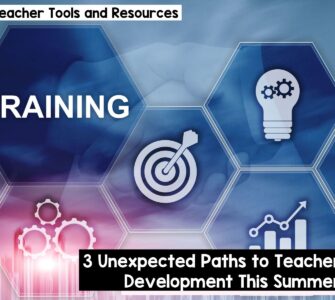 3 Unexpected Paths to Teacher Development This Summer
3 Unexpected Paths to Teacher Development This Summer